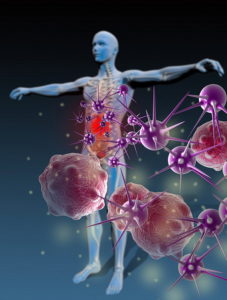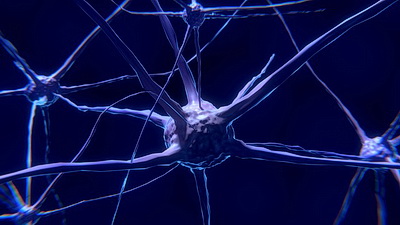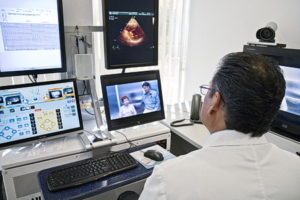
Will physicians be a thing of the past? It is claimed that robots will replace doctors by 2035 and artificial intelligence (AKA AI, machine language, machine learning) is the source of this highly sort after the trend of the 21st century.
Indeed, AI is proving to be a benefit across a broad spectrum of industries. It is of special use for law enforcement, such as the Department of Homeland Security who is using machine language to help identify human traffickers. Moreover, the medical industry is very interesting and aggressive with promoting AI and the results are impressive.
A study by Massachusetts General Hospital showed that machine learning is more efficient in analyzing readings for mammograms of high-risk cancers than human radiologists. Similar efficiency of AI was reported when examining retinal images of diabetic patients.
Advancements in medical technology go much farther than that. Be it imaging, testing, or microscopic surgery, machine language is now widely used in the medical field. It is believed that AI will provide more evidence-based medical care along with more accurate diagnoses and provide very few chances of errors.
And the industry is thriving with new and innovative minds who will bring us to a new technical revolution of machine learning all through this 21st century, such as the discussion in this tweet.
What Exactly is Artificial Intelligence?
In a nutshell, AI is the use of computers to study data and subsequently learn from that data in order to produce more efficient results.
With that said, the health care industry still has certain limitations when using machine language. For example, it cannot replace the need for medical practitioners physically and psychologically diagnosing a patient, but as advancements continue, it is not a far thought that practitioners may be seeing less and less of us.
One example is heart monitor apps that you can download to your smartphone, along with acquiring the appropriate apparatuses. Another example is small chips that a surgeon might place near your heart and as you sleep, it monitors your heartbeat and sends the data back to the hospital.
Whether human physicians will always remain in the health care equation in the future or they will leave and we will be diagnosed by a hologram doctor remains to be seen. Let’s see how close we really are to having robots diagnose our physical health.
Benefits of AI in the Medical Industry

Intelligent software has numerous applications. It is widely used in robot-assisted surgeries, analysis of images like CT scans and MRIs, and clinical trials. The total investment in healthcare AI is expected to reach $6.6 billion by 2021. There are many important reasons for such a huge investment.
Some of the reasons why AI is likely to have a greater hand in helping human doctors are:
Faster and More Accurate Diagnosis
Though artificial intelligence is not a real doctor, it is an accurate tool for faster and more accurate diagnoses. Some diseases require immediate intervention, and human medical practitioners might fail to meet this need.

AI systems are designed similar to the neural network in the human brain and have the ability to learn from previous cases and that is the key – they learn.
Unlike standard software which simply performs a task or multiple tasks, machine language goes one step further by taking certain facts (called data points) and compares them to other examples to would determine the outcome. AI also has the ability to quickly access knowledge bases around the world in order to make an accurate judgment and a faster diagnosis.
Interactions with humans can be exhausting for medical practitioners, and subsequently, increase the chances of an inaccurate diagnosis. But computers never get tired. They can deal with hundreds of patients without affecting the chances of error.
Cost Reduction
Investment in machine learning is generally considered by many to be an expensive proposition. In reality, though, the operating costs are far less when compared to human practitioners. The initial investment is huge, but it can be easily recovered because of lower operating costs.
Reliance on AI also saves costs for the patients. Since AI can provide you with a solution without visiting a doctor’s office, it saves traveling time and cost.
Virtual Presence

Not exactly AI, but still an advancement in technology, telemedicine allows people with medical issues to have a video conference with a physician without the need to visit his/her office.
Regardless of your location, you can seek accurate medical assistance for numerous ailments. This is exceptionally helpful for people that live in rural areas where medical practitioners are many miles away.
Reasons Why Artificial Intelligence Cannot Replace Doctors
Even though AI is widely used in the medical industry, it cannot replace the need for medical practitioners altogether. Some of the reasons why there will always be a need for physicians are:
Robots and AI are Not Empathetic

Human beings are social animals. They do not only have physical needs but emotional needs as well. At times, a patient visits a doctor’s office just to be heard and understood.
Though machine language can help in providing a faster and more accurate diagnosis, the algorithms can never fulfill the emotional needs of patients. For life-changing decisions like surgery, even the smartest algorithms cannot listen to your concerns and provide compassionate advice. It is still impossible to imagine healthcare without the human element involved.
Not Everything Can be Classified as 0s & 1s
Algorithms classify everything as 0s and 1s – the binary code (DNA of computers) used in all machines worldwide. However, in case there are multiple problems, it is may become complicated before reaching a conclusion.
Diseases also follow the same pattern of variability. AI is still incapable of analyzing complex information about multiple diseases and illnesses at the same time. In the future, there might be an improvement in technology that can process more complicated information, but right now, our dependence on computers for accurate diagnosis remains specific to single ailments.
Human Element in Data Entry
AI is not self-sufficient. It still needs humans to enter data. Only then will artificial intelligence process information and suggest a conclusion. If there is human error in the data entry phase, there will be an error in the analysis and diagnosis. Therefore, we cannot always rely solely on the diagnosis of machines, so currently, there will always be the need for a medical practitioner to reach a final conclusion.
It’s Not About Technology vs. Humans
Machines and human beings are not rivals. They are partners working towards the same goal. Technology helps in providing more accurate and timely solutions, but it lacks the ability to process complex information at this time.
Human medical practitioners, on the other hand, are not as quick thorough on specific diagnoses and might reach a faulty conclusion. Only if humans and technology work together, can they provide safe and reliable medical solutions to the patients.
Conclusion
 We see that there is a bright future for the medical industry as far as technological advancements are concerned. The human error aspect has decreased drastically, while efficiency has increased multiple times over, but even considering the efficiency of AI, it is highly unlikely that robots will replace human physicians in this decade.
We see that there is a bright future for the medical industry as far as technological advancements are concerned. The human error aspect has decreased drastically, while efficiency has increased multiple times over, but even considering the efficiency of AI, it is highly unlikely that robots will replace human physicians in this decade.
So for now, AI and humans will have to work in collaboration, but who knows? Maybe in our lifetime, we may just see that holographic doctor after all.




 he research on ectogenesis began earlier in the last century. However, there has been rapid progress over the last 20-30 years. It is during this time that the world has experienced marked improvements in neonatal intensive care.
he research on ectogenesis began earlier in the last century. However, there has been rapid progress over the last 20-30 years. It is during this time that the world has experienced marked improvements in neonatal intensive care. 

 Moderate to severe arthritis can cause physical limitations and even a person’s daily chores can become painful. Bone and joint pain make bending, walking, and climbing difficult. People may also need assistance in cooking, cleaning, bathing, and other home chores.
Moderate to severe arthritis can cause physical limitations and even a person’s daily chores can become painful. Bone and joint pain make bending, walking, and climbing difficult. People may also need assistance in cooking, cleaning, bathing, and other home chores.




 Men who consume large amounts of
Men who consume large amounts of  One of the most important causes of prostate cancer is
One of the most important causes of prostate cancer is ![A DNA adduct (at center) of benzo[a]pyrene, the major mutagen in tobacco smoke](http://howard-fensterman-charities.com/wp-content/uploads/2016/08/CC-G-Wikimedia-040819a-650px-Benzopyrene_DNA_adduct_1JDG.png)
 Men over 50 are recommended to go for regular screening for prostate cancer. This cancer is more common than other cancers, but successful treatment is high if caught early and there are numerous methods now with regards to how to treat it.
Men over 50 are recommended to go for regular screening for prostate cancer. This cancer is more common than other cancers, but successful treatment is high if caught early and there are numerous methods now with regards to how to treat it. You are what you eat. If you eat healthily, get adequate sleep and exercise regularly, chances are you will stay healthy. But part of staying healthy also requires you to visit a doctor. Be it a routine checkup or an emergency, visiting a physician’s office is inevitable. For many people and not a wise choice to do, they don’t visit a doctor until there is an emergency or a serious medical condition that materializes.
You are what you eat. If you eat healthily, get adequate sleep and exercise regularly, chances are you will stay healthy. But part of staying healthy also requires you to visit a doctor. Be it a routine checkup or an emergency, visiting a physician’s office is inevitable. For many people and not a wise choice to do, they don’t visit a doctor until there is an emergency or a serious medical condition that materializes.  One of the most sacred resources of our generation is time. You never have enough of it. If you are a working individual or a stay at home parent, your daily routine is packed with tasks. In case you are sick, access to online medical information can help you save time and money.
One of the most sacred resources of our generation is time. You never have enough of it. If you are a working individual or a stay at home parent, your daily routine is packed with tasks. In case you are sick, access to online medical information can help you save time and money.  If you follow the conventional pattern of visiting a doctor and using the prescribed medicine, you can refer to the doctor in case of an incorrect diagnosis or side effect of a certain drug. But you lose this edge if you are only relying on online medical information.
If you follow the conventional pattern of visiting a doctor and using the prescribed medicine, you can refer to the doctor in case of an incorrect diagnosis or side effect of a certain drug. But you lose this edge if you are only relying on online medical information. 



 Do you forget small things and blame your memory? If yes, then start walking today because it directly impacts your short-term memory.
Do you forget small things and blame your memory? If yes, then start walking today because it directly impacts your short-term memory.  The reason why you feel light after spending time outdoors is that it changes and releases your stress. This is why many therapists suggest their clients go for
The reason why you feel light after spending time outdoors is that it changes and releases your stress. This is why many therapists suggest their clients go for